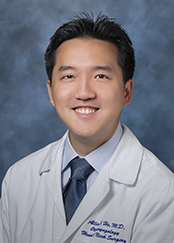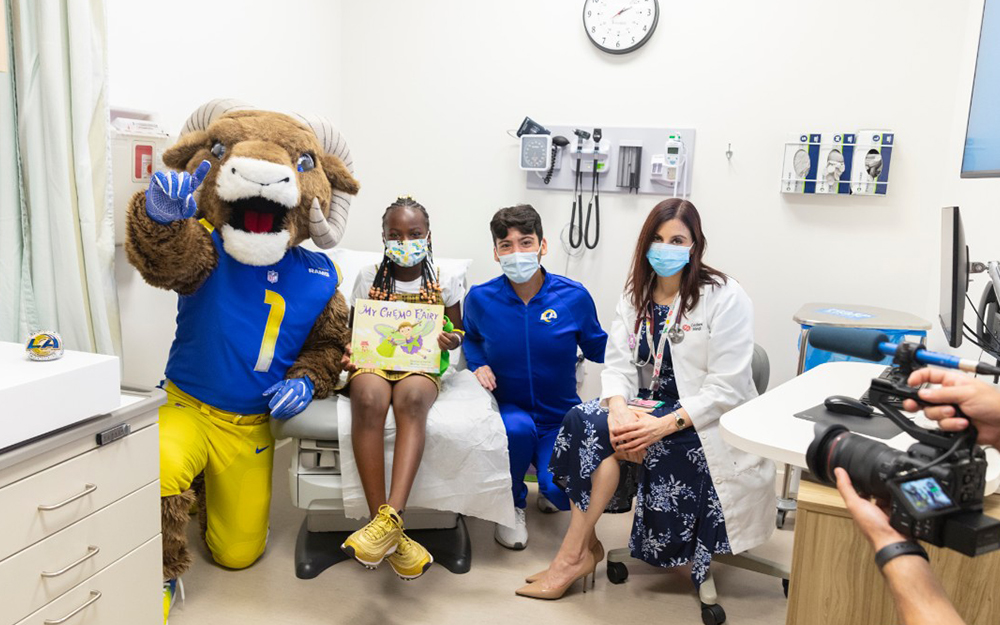Oral Cancer: Six Things Everybody Should Know
Date
April 8, 2022

Date
April 8, 2022
Credits
Medical providers featured in this article

In Brief
{{cta-block}}
April is Oral Cancer Awareness Month. We spoke to two Cedars-Sinai experts about oropharyngeal cancer—a type of oral cancer that’s on the rise—and how a vaccine can help protect people of any gender from developing it.
From prevention to diagnosis and treatment, here are six facts everyone should know about oropharyngeal cancer, which is often treatable if it's caught early.
"While most HPV strains are harmless, at least nine of them are known to cause cancer.."
1: The human papillomavirus (HPV) causes 70% of oropharyngeal cancers
HPV is the most common sexually transmitted infection in the U.S. Of the 100 known strains of HPV, about 40 can spread through direct sexual contact to the genital areas, mouth and throat.
"While most HPV strains are harmless, at least nine of them are known to cause cancer," says Dr. Allen Ho, director of the Head and Neck Cancer Program at Cedars-Sinai.
HPV 16 and 18 are the most common high-risk strains that can cause oropharyngeal cancers, also known as throat cancers or cancers of the oropharynx. (The oropharynx encompasses the back of the throat, including the tonsils and base of the tongue.) Those strains are also associated with anal, cervical, vaginal and vulvar cancers in women as well as anal and penile cancers in men.
{{providers}}
2: The HPV vaccine can protect against oropharyngeal cancer in females and males
Getting the HPV vaccine before becoming sexually active is the single best way to prevent oropharyngeal cancer.
"The vaccine is aimed at all nine of the high-risk HPV strains, including HPV 16 and 18, which means it can protect against oropharyngeal cancers that affect males and females alike," says Dr. Michelle Chen, a specialist in head and neck surgery at Cedars-Sinai.
"Unfortunately, it's not widely known that the HPV vaccine is important for boys as well as girls. This may be why boys are getting this shot at much lower rates."
The Centers for Disease Control and Prevention (CDC) recommend that boys and girls receive the first dose of the HPV vaccine at age 11 and the second dose at age 12. The CDC also recommends the vaccine for adults through age 26 who have not yet received it. The Food and Drug Administration has approved the shot for people up to age 45.
"When talking with pediatricians and other trusted community figures, we encourage outreach about HPV vaccination, including for boys," says Dr. Chen, who has published research on HPV vaccination rates in the U.S.
3: HPV is very common, but most people with HPV won't get cancer
"Some 80%-90% of sexually active people will get HPV at some point in their life, although most will never even know it," says Dr. Ho, whose research focuses on identifying biomarkers to detect which HPV strains are likely to recur and be dangerous.
The body usually clears the virus without trouble. In some cases, however, the virus will remain in the body and lie dormant, and it can reawaken years later as cancer.
"It can take decades after being infected with HPV for cancer to develop," says Dr. Ho.
It's also unclear if having HPV alone is enough to cause oropharyngeal cancers. It's possible that other factors, like using tobacco, may interact with HPV to cause these cancers. Still, the risk is low.
"While oropharyngeal cancers have been on the rise, fewer than 1% of people who get even the high-risk strains of HPV will go on to develop a related cancer," Dr. Ho says.
4: Men are at higher risk
When it comes to oropharyngeal cancers caused by HPV, there's not much research on the risks of getting the virus from giving oral sex to a man compared with giving oral sex to a woman.
"However, we do know that HPV-related oropharyngeal cancer is twice as common in men than women," says Dr. Chen.
The concentration of HPV in the thinner, moister skin of the vulva is higher than the amount in the thicker, drier skin of the penis, which may affect how easy it is to transmit. But there could be other factors that explain the difference.
Tobacco and alcohol use may increase risk, for example, and both are more common among men. The number of sexual partners matters, too.
"There's evidence that oropharyngeal cancers are more common in people who have had more than 20 sexual partners," says Dr. Ho.
5: Safe sex reduces your risk
The types of HPV found in the mouth are almost entirely sexually transmitted, so oral sex is likely the main route of infection. That's why safety precautions should also be taken during oral sex and not just when engaging in anal or vaginal intercourse.
When used consistently and correctly, condoms and dental dams can significantly lower the risk of transmitting HPV and reduce the chance of developing oropharyngeal cancer, according to the CDC.
In Discoveries: An Epidemic Ignites
6: Oropharyngeal cancer is treatable
"The good news is that when they are caught early, HPV-related oropharyngeal cancers respond well to treatment," says Dr. Chen.
Symptoms of oropharyngeal cancer may include a persistent sore throat or ear pain; trouble swallowing, moving the tongue or fully opening the mouth; a lump in the back of the mouth, throat or neck; a white patch on the tongue or lining of the mouth that does not go away; or coughing up blood.
Surgery is usually the first step, sometimes followed with radiation. If the cancer is particularly aggressive, oropharyngeal cancer patients may undergo chemotherapy, reconstructive surgery and speech therapy, if needed.





